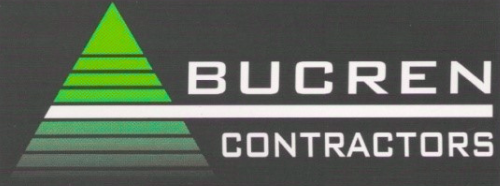Navigating Regulations: Compliance in Asbestos Removal Projects

Asbestos, once widely used in construction for its fire-resistant properties, is now recognised as a serious health hazard due to its carcinogenic nature. Asbestos-containing materials (ACMs) pose significant risks to human health when disturbed, requiring stringent regulations and guidelines for their safe removal and disposal. In this article, we explore the importance of compliance in asbestos removal projects and how Bucren Contractors navigates regulations to ensure the safety of our clients and the environment.
- Understanding Regulatory Frameworks:
- Bucren Contractors prioritises a comprehensive understanding of the regulatory frameworks governing asbestos removal projects. We stay abreast of local, national, and international regulations, including legislation such as the Control of Asbestos Regulations (CAR) and guidelines set forth by regulatory bodies like the Health and Safety Executive (HSE). By adhering to these regulations, we ensure that our asbestos removal practices meet the highest safety standards.
- Site Assessment and Risk Management:
- Before commencing any asbestos removal project, Bucren Contractors conducts a thorough site assessment to identify the presence, type, and condition of ACMs. This assessment helps us evaluate potential risks to workers, occupants, and the environment and develop a tailored risk management plan to mitigate these risks effectively. By understanding the scope and complexity of each project, we can implement appropriate control measures to ensure safe and compliant asbestos removal.
- Licensed and Trained Personnel:
- Bucren Contractors employs licensed and trained personnel who possess the expertise and qualifications required for safe asbestos removal practices. Our team undergoes rigorous training in asbestos awareness, handling, and removal techniques, as well as health and safety protocols. By investing in ongoing training and professional development, we ensure that our personnel are equipped to carry out asbestos removal projects safely and compliantly.
- Safe Work Practices and Procedures:
- Safety is paramount in asbestos removal projects, and Bucren Contractors maintains strict adherence to safe work practices and procedures. We implement a range of control measures, including the use of personal protective equipment (PPE), containment barriers, negative air pressure systems, and wet removal techniques, to minimise the release of asbestos fibres and protect workers and occupants from exposure.
- Waste Management and Disposal:
- Bucren Contractors follows proper waste management and disposal protocols to ensure the safe handling and disposal of asbestos-containing materials. We transport asbestos waste in sealed containers marked with appropriate warning labels and dispose of it at licensed facilities authorised to handle hazardous materials. By complying with waste regulations, we prevent environmental contamination and minimise risks to public health.
- Regulatory Reporting and Documentation:
- Compliance with regulations extends to regulatory reporting and documentation, and Bucren Contractors maintains meticulous records of all asbestos removal projects. We document project plans, risk assessments, air monitoring results, waste disposal manifests, and clearance certificates to demonstrate compliance with regulatory requirements and provide transparency to our clients and regulatory authorities.
Compliance with regulations is paramount in asbestos removal projects to ensure the safety of workers, occupants, and the environment. Bucren Contractors navigates regulatory frameworks with precision and expertise, prioritising safety, professionalism, and transparency in every aspect of our asbestos removal projects. By adhering to regulations, we mitigate risks, protect public health, and deliver exceptional service to our clients. Contact Bucren Contractors today for safe and compliant asbestos removal solutions tailored to your specific needs and requirements.
